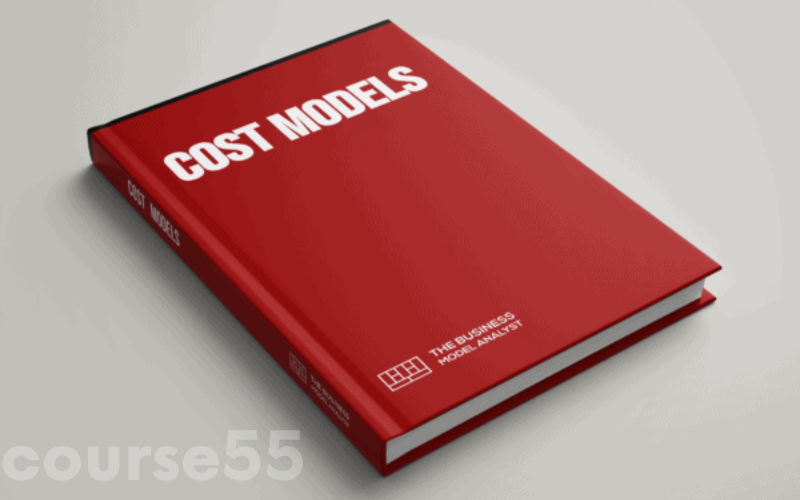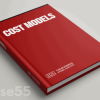Cost Models By Daniel Pereira – The Business Model Analyst
$19.00 Original price was: $19.00.$5.00Current price is: $5.00.
File Size: 793 KB
Delivery Time: 1–12 hours
Media Type: Ebook
Review of Cost Models by Daniel Pereira
In a landscape where businesses juggle innovation and sustainability, understanding the nuances of costs is essential. Cost models by Daniel Pereira emerges as an indispensable guide, intricately weaving together theoretical principles with practical strategies. It is not merely a manual for balancing books; rather, it is a lighthouse illuminating the complex waters of business finances.
Targeting both entrepreneurs and experienced analysts, this book opens up a sophisticated dialogue about the various cost types and their profound implications on business performance. As one delves into its pages, they will uncover the layers of cost theory, discovering that managing expenses is far more intricate than simply ensuring income surpasses outgoings. Herein lies the beauty of Pereira’s work – a blend of clarity and depth, designed to make readers better equipped to navigate the financial landscape of the business world.
Comprehending Cost Dynamics
Pereira’s cost models fundamentally claim that genuine sustainability in business is attainable only when revenue exceeds expenditures. Nonetheless, this principle is insidiously straightforward. Pereira encourages readers to reflect on the evolving landscape of expenses, emphasizing that each cent expended narrates a tale. The cost structure, as posited by the author, serves as the foundation of a business model, offering essential information that can either drive a corporation toward success or plunge it into financial turmoil.
Take, for instance, a shipping enterprise. Although it may generate substantial revenue from freight transport, its actual profitability depends on many fundamental costs: fuel expenditures, vehicle maintenance, crew compensation, and the depreciation of equipment over time. All these factors are dynamic; they vary due to market situations, legislative alterations, and changes in consumer behavior. Pereira’s analysis of these complexities prompts business owners to adopt a holistic perspective on their expenses, ensuring they do not neglect any concealed liabilities that could jeopardize their profitability.
Pereira elucidates essential concepts including fixed costs, variable costs, and semi-variable costs, establishing a basis for a more profound exploration of their interactions. Fixed costs, including rent and salary, remain invariant irrespective of production levels. Conversely, variable costs vary with production levels. Semi-variable costs encompass aspects of both fixed and variable expenses, resulting in a range of financial commitments that can perplex even the most experienced entrepreneurs. By classifying these expenses and comprehending their ramifications, readers can make informed choices that will ultimately enhance efficiency and sustainability in their operations.
Fundamental Principles from the Text:
- Fixed Costs: Expenditures that remain constant regardless of the volume of goods or services produced.
- Variable Costs: Expenditures that fluctuate with changes in production levels.
- Semi-variable Costs: Expenses that remain constant up to a specific level of production but fluctuate beyond that point.
These categories elucidate financial dynamics and facilitate strategic planning that may adjust to evolving conditions.
Importance of Cost Analysis in Business Strategy
A significant takeaway from Pereira’s guide is the crucial role of cost analysis in crafting a robust business strategy. As companies operate in increasingly competitive markets, the ability to dissect and analyze costs becomes a game-changer. By systematically examining cost structures, businesses can identify opportunities for reducing waste, optimizing processes, and ultimately elevating their profit margins.
Consider a technology startup. By analyzing which features of their product consume excessive resources, they can streamline development, thus reducing costs while maximizing output quality. This kind of meticulous examination is what Pereira advocates throughout his book. It’s not just about cutting corners; it’s about cultivating a mindset that seeks out inefficiencies and embraces a culture of continuous improvement.
Moreover, Pereira emphasizes the relationship between cost models and value creation. Understanding costs enables businesses to price their products aptly, ensuring that they remain competitive while preserving margins. This aligns with the principle of perceived value, where businesses must not only account for direct costs but also consider the value proposition offered to customers. As such, cost analysis becomes a two-pronged approach: it supports internal efficiencies and guides external market strategies.
Cost Analysis Techniques Explored:
- Activity-Based Costing (ABC): Assigning costs to activities based on their actual consumption.
- Standard Costing: Comparing actual costs to pre-determined standards.
- Break-even Analysis: Identifying the sales volume at which total revenues equal total costs.
Through the lens of these techniques, Pereira equips readers with practical tools to take charge of their financial narratives.
Pragmatic Insights for Execution
Pereira’s dedication to integrating theoretical discoveries with practical application distinguishes cost models. Every chapter elucidates cost ideas and provides practical techniques for their incorporation into daily operations. This dual approach illustrates Pereira’s conviction that comprehending costs should extend beyond theoretical confines; it should function as a toolset for significant, actionable transformation.
By implementing tactics such as budgeting and forecasting, firms can establish a framework that corresponds with their financial objectives. An effectively organized budget serves as a guide for firms in achieving their financial goals, while also identifying opportunities for cost reduction. Moreover, forecasting allows organizations to predict alterations in their operational landscape, including variations in raw materials and changes in client demand, thereby enhancing their financial resilience.
Pereira emphasizes the importance of feedback loops in cost control. By consistently comparing actual costs to predicted expenses, firms may adapt their strategies in real time, rendering the cost management process a dynamic entity that evolves with the business environment.
Approaches for Expense Control:
- Periodic Financial Audits: Executing systematic evaluations to detect inconsistencies.
- Cost Centers: Designating departments responsible for managing particular expenditures.
- Performance Metrics: Establishing KPIs to assess cost efficiency and profitability.
These insights promote accountability and cultivate a proactive culture within the organization, transforming cost management from a burdensome task into an integral aspect of operational excellence.
Conclusion
In a world grappling with constant change, Daniel Pereira’s cost models stands as a testament to the power of knowledge in navigating business complexities. It transcends traditional teachings, inviting readers to embrace the multifaceted nature of costs, understand their implications, and apply insightful strategies for sustainable growth.
The book serves as a timely reminder that costs are not mere numbers on a balance sheet; they are integral to the story every business tells. Through its accessible format, practical insights, and nuanced analyses, Pereira’s guide promises to enlighten entrepreneurs and analysts alike, ensuring they are well-equipped to traverse the intricate landscape of business finance. As you turn the final pages, you’ll find not just information, but a renewed perspective on the financial dynamics that fuel successful business endeavors.
Frequently Asked Questions:
Business Model Innovation: We use a group buying strategy that enables participants to share costs and access popular courses at lower prices. This approach helps individuals with limited financial resources, although it may raise concerns among content creators regarding distribution methods.
Legal Considerations: Our operations navigate complex legal issues. While we do not have explicit permission from course creators to resell their content, there are no specific resale restrictions mentioned at the time of purchase. This lack of clarity allows us to offer affordable educational resources.
Quality Control: We guarantee that all course materials provided are identical to those offered directly by the creators. However, please note that we are not official providers. As a result, our services do not include:
– Live coaching calls or sessions with the course author
– Access to exclusive author-controlled groups or portals
– Membership in private forums
– Direct email support from the author or their team
Our goal is to make education more accessible by offering these courses independently, without the additional premium services available through official channels. We appreciate your understanding of our unique approach.
Be the first to review “Cost Models By Daniel Pereira – The Business Model Analyst” Cancel reply
You must be logged in to post a review.
Related products
Business
Business
Business


















Reviews
There are no reviews yet.